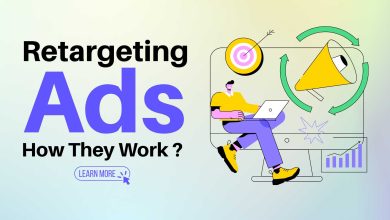A/B Testing in Advertising: Optimizing Campaigns for Maximum Impact
Introduction
A/B testing, also known as split testing, is a powerful and data-driven methodology used in advertising to compare and evaluate the effectiveness of different campaign elements. By splitting an audience into two or more groups and exposing them to different variations of an ad, marketers can determine which version performs better. In a fiercely competitive and dynamic advertising landscape, A/B testing has emerged as a crucial tool for advertisers seeking to optimize their campaigns, drive higher conversions, and achieve maximum impact. This essay explores the fundamentals, benefits, best practices, and real-world applications of A/B testing in advertising.
Fundamentals of A/B Testing
1.1 Understanding A/B Testing
A/B testing involves creating two or more variations of an ad element, such as headlines, images, call-to-action (CTA) buttons, or landing pages. These variations are then presented to separate groups of the target audience to measure their response. The success metric can vary depending on the campaign’s objectives, ranging from click-through rates (CTR) and conversion rates to time spent on a webpage or app engagement.
1.2 The Process of A/B Testing
The A/B testing process typically involves the following steps:
- Identifying the objective: Clearly defining the goal of the A/B test, such as increasing conversions or improving click-through rates.
- Formulating hypotheses: Developing educated guesses about which variations will perform better and why.
- Creating variations: Designing different versions of the ad element to be tested.
- Randomly dividing the audience: Splitting the audience into equal or proportionate groups to ensure fair comparison.
- Running the test: Implementing the variations and tracking the performance metrics.
- Analyzing results: Comparing the performance of each variation and drawing insights.
- Implementing the winning variation: Rolling out the most successful variation based on the data.
Benefits of A/B Testing in Advertising
2.1 Data-Driven Decision Making
A/B testing empowers advertisers to make data-driven decisions rather than relying on assumptions or instincts. By analyzing real-time data, advertisers gain insights into what resonates most with their audience, leading to more effective campaigns and higher returns on investment (ROI).
2.2 Optimizing Ad Performance
Through continuous testing and refinement, advertisers can optimize various ad elements, such as headlines, visuals, and copy, to deliver the most impactful combination. This iterative process ensures that campaigns stay relevant and engaging, keeping up with evolving consumer preferences.
2.3 Reducing Risk and Wastage
A/B testing minimizes the risk associated with launching untested campaigns. By validating assumptions before committing to a full-scale rollout, advertisers avoid wasteful spending on ineffective ad elements.
Best Practices for A/B Testing in Advertising
3.1 Defining Clear Objectives
Before commencing an A/B test, advertisers must establish clear and measurable objectives. Whether it’s improving click-through rates, increasing conversions, or enhancing ad engagement, having a well-defined goal ensures that the test remains focused and purposeful.
3.2 Testing One Element at a Time
To derive accurate and actionable insights, it’s essential to test one ad element at a time. Running simultaneous tests on multiple elements can lead to confounding variables and make it difficult to isolate the impact of each variation.
3.3 Sample Size and Duration
Ensuring an adequate sample size and test duration is crucial for obtaining reliable results. Small sample sizes may lead to inconclusive outcomes, while too long a test duration can delay implementing successful variations.
3.4 Data Analysis and Interpretation
Thoroughly analyzing the test results and interpreting the data is vital to draw meaningful conclusions. Statistical significance, confidence intervals, and segment-specific insights are factors that need to be considered while interpreting A/B test data.
Real-World Applications of A/B Testing in Advertising
4.1 Email Marketing Campaigns
A/B testing is extensively used in email marketing to optimize subject lines, content, and CTA buttons. Testing different subject lines helps determine which ones generate higher open rates, leading to increased email engagement and conversions.
4.2 Landing Pages and Website Optimization
A/B testing is valuable for enhancing landing page performance. Advertisers can experiment with different layouts, visuals, and copy to understand what drives higher user engagement and conversion rates.
4.3 Digital Ad Creatives
In digital advertising, A/B testing is widely applied to optimize ad creatives, such as images, copy, and CTAs. Understanding which ad variations resonate best with the target audience enhances ad relevance and click-through rates.
Challenges and Future Trends
5.1 Overcoming Bias and Assumptions
Advertisers must be mindful of potential biases and assumptions that can influence A/B testing outcomes. Preconceived notions can skew the interpretation of results, undermining the integrity of the testing process.
5.2 Personalization and Dynamic A/B Testing
The future of A/B testing in advertising lies in personalization and dynamic content. Advanced algorithms can customize ad elements in real-time based on user behavior and preferences, maximizing engagement and conversions.
5.3 Multivariate Testing and Machine Learning
Multivariate testing, which involves testing multiple ad elements simultaneously, and machine learning algorithms hold promise for sophisticated and automated A/B testing in the future.
Conclusion
A/B testing in advertising has emerged as a fundamental practice for optimizing campaigns and driving higher returns on investment. By adopting a data-driven approach and continuously testing and refining ad elements, advertisers can remain relevant and effective in a competitive landscape. As technology continues to evolve, A/B testing is poised to become even more sophisticated, paving the way for personalized, dynamic, and highly impactful advertising campaigns. Advertisers who embrace this methodology are likely to unlock new opportunities, increase conversions, and maintain a competitive edge in the fast-paced world of advertising.



